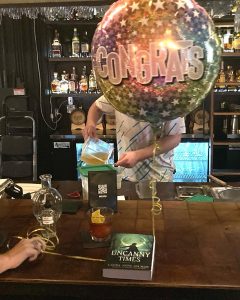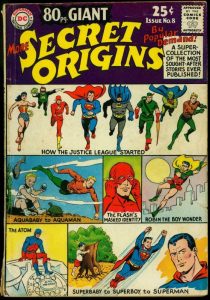Last month I blogged about the weeks leading up to the launch of my most recent book, Uncanny Times. But now we’re a ten days post-launch, and it’s time to check in, and do a reality check.
I’d been doing pre-release publicity up to the day or release: blogposts and podcasts and interviews and social media all over the place until even my mom would have been tired of seeing my face. Does it actually move any books? God only knows, and They’re not telling. You do what you can to the best of your ability and spoons, and hope something sticks.
But even with all that, even with the positive reviews the book was getting and the publicity, and the very successful Goodreads giveaway, and everything else we were able to do… come October 18th, it was all in the hands of the bitch-goddess of Retail.
Take a deep breath. Wait.
Everything up until now has been Possibility and Expectation. Shit’s real now.
Some people like doing a Big Event on the day-of. I’ve done that before, and, honestly… the stress of planning always overwhelmed any actual benefit, either emotionally or sales-wise. I think everyone should do it at least once, but after that…. unless your publisher is doing all the work, go with what you, personally, enjoy. If that’s a big party, great! If it’s staying home on your couch and ignoring everything, also great!
Since we had events lined up for that weekend, I chose to meet friends for drinks after work, to properly toast Uncanny Times on its way. (I showed up to find one friend already there, hand-selling the book to her fellow drinkers at the bar. That’s the kind of friend every writer should have).
While I’d love to say that the next morning I woke up and simply went back to work, focused on the next project, that would be an utter and absolute lie. I checked the Amazon rankings. And googled my name + title. Promoted the book signings I was going to do that weekend. Rinse and repeat every few hours for the next three days.
And then I made myself stop. Not entirely – I’m only human, after all. But the every hour nonsense, yeah. I should note here that I do not take Amazon “bestseller” status with any particular seriousness. I watch how the ratings fluctuate, and note dips or peaks rather than any particular number. And, of course, I anxiously read the early reader reviews. But my focus shifted from “what will critics say/how can I get the word out?” to “how can I expand my reach?”
Because, and this is a truth it took me a few books to learn, Launch Day is a day to celebrate, to enjoy, to stand on a chair and shout out to the world THIS IS MY BOOK ! IT’S HERE! But it’s also just one day in a long march of days, and the weeks after launch matter just as much as the days before.
And then, sooner than you think, but honestly also not soon enough, you have to let the book do what it will do, and go back to work on the next.
I’m looking forward to that.
and remember….





 Once I got reading under my belt, I couldn’t do enough of it–books, stories, cereal boxes, comic books. I gobbled up story like I was starving for it, initially uncritically, but fairly soon starting to think about why stories worked/didn’t work for me. In this I had a partner: my brother Clem. He and I amassed a comic book collection of perhaps 2000 well-worn, repeatedly read comics–most, but not all of them DC (the home of Superman and Batman). Clem and I haunted the smoke shop at the corner, where the new comics came in every… I think it was Tuesday… and conspired over which one of us would buy which. We took them home and read the them and then we talked over them. Clem, a far better artist than I will ever be, led the way in discussing the art. One of our favorite riding-on-the-subway games was to identify people who looked like they were drawn by specific artists.
Once I got reading under my belt, I couldn’t do enough of it–books, stories, cereal boxes, comic books. I gobbled up story like I was starving for it, initially uncritically, but fairly soon starting to think about why stories worked/didn’t work for me. In this I had a partner: my brother Clem. He and I amassed a comic book collection of perhaps 2000 well-worn, repeatedly read comics–most, but not all of them DC (the home of Superman and Batman). Clem and I haunted the smoke shop at the corner, where the new comics came in every… I think it was Tuesday… and conspired over which one of us would buy which. We took them home and read the them and then we talked over them. Clem, a far better artist than I will ever be, led the way in discussing the art. One of our favorite riding-on-the-subway games was to identify people who looked like they were drawn by specific artists. 